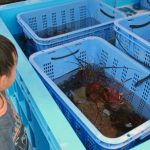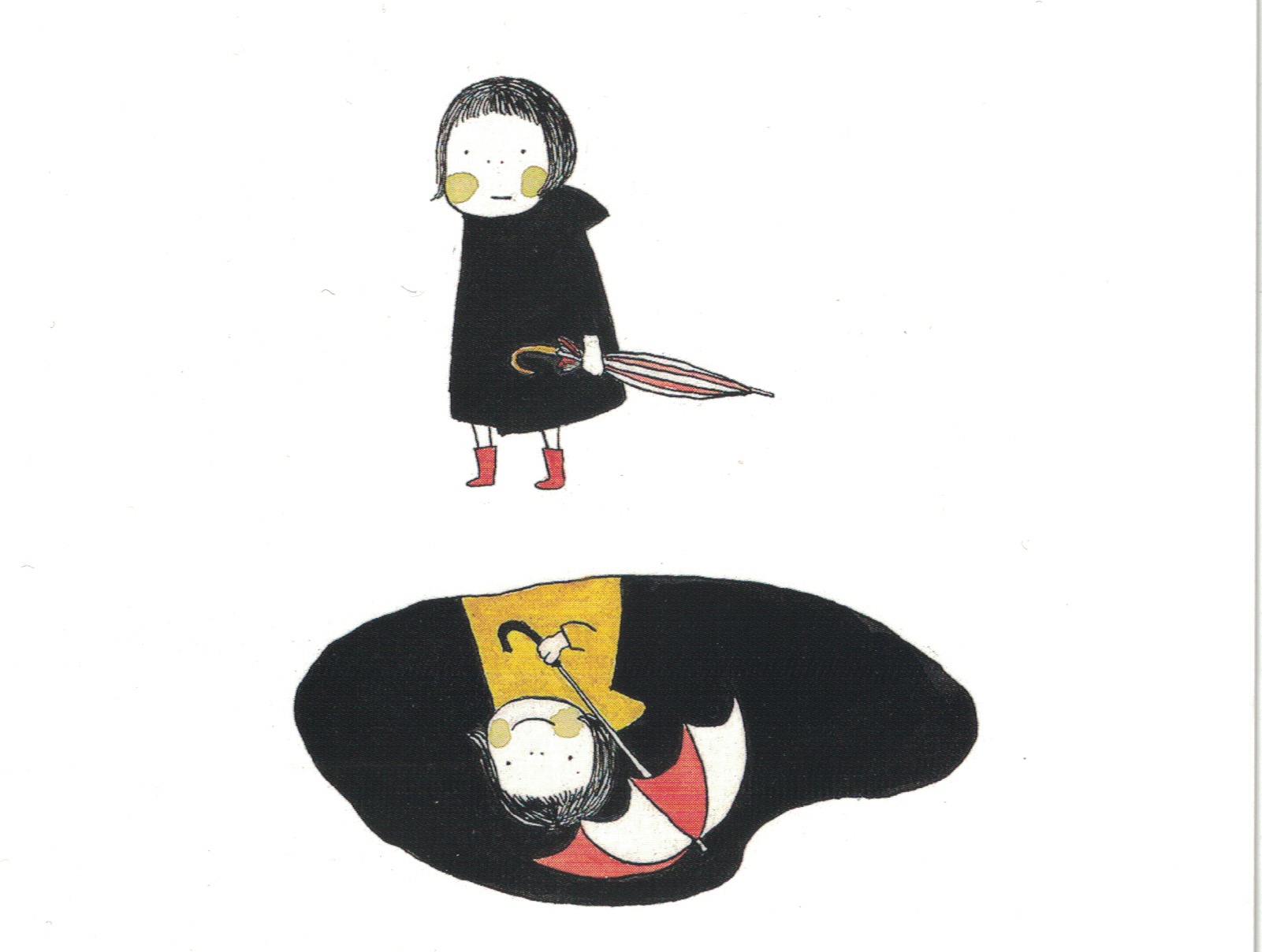Contents
- In short: Three main functions of the particle “de” (で) among many
- A bit more: “de” can mean “and”
- Bonus: Exercise on when to use the particle “de” for “and”
************************
1. In short: Three main functions of the particle “de” (で) among many
(1) It can mean “by means of…”
We say the particle “de” after a tool or a means, including a means of transport or a language for communication.
Example 1: アメリカンとJALで日本へ行きます。Amerikan to Jaru de Nihon e ikimasu. (I will go to Japan by American Airlines and JAL.)
(2) It can mean “at” or “in a place”
The particle “de” shows that the preceding word is the location of an action or an event, with => the Verbs of Activities Occurring At One Place.
Ex. 2: 庭でかえるを見ました。Niwa de kaeru o mimashita. (I saw a frog in the yard.)
(3) It can also indicate a cause or a reason
We say “de” when we explain a cause or reason with a noun.
Ex. 3: 台風で電車が止まりました。Taihuu de densha ga tomarimashita. (The train service was disrupted due to a typhoon.)
Ex. 4: アレルギーで甲殻類が食べられません。Arerugii de kookaku-rui ga taberaremasen. (I have an allergy and I can’t eat crustaceans.)
2. A bit more: “de” can mean “and”
Sometimes you hear “de” after a noun and it may mean “and”. See the following:
Ex. 5: 三浦さんは、作家でプロスキーヤーです。Miura-san wa sakka de puro-sukiiyaa desu. (Mr. or Ms. Miura is an author and a professional skier.)
This “de” is not a particle, but a conjugated form of “da”, the plain form of the auxiliary verb “desu”.
Nonetheless, we decided to include this information here. This way we can clarify the possible confusion between “to” and “de” when you want to say “and” after a noun.
This “de” literally means “…desu. Soshite (And)…” In other words, it combines two sentences, of which the first one finishes with “desu” (or “deshita”, “da”, “datta”, etc.). Ex. 6 was combined into Ex. 5 with “de”.
Ex. 6: 三浦さんは作家です。そして、三浦さんはプロスキーヤーです。Miura-san wa sakka desu. Soshite, Miura-san wa puro sukiiyaa desu. (Miura is a writer. And Miura is a professional skier.)
3. Bonus: Exercise on when to use the particle “de” for “and”
Let’s do an exercise! You are asked to translate the following English sentences into Japanese. To connect the “author” and the “professional skier”, which sentences require the particle “to” and which “de”, the conjugated auxiliary verb?
Remember you use “de” when the following condition is met: The nouns to be combined both (or all) refer to the same matter. If they don’t, always use the particle “to”.
(1) Exercise
1. An author and a professional skier came to the party.
2. We invited (yobimashita) an author and a skier to the party.
3. We offered (dashimashita) the author and the professional skier some drinks.
4. The son of the author and the professional skier is a chef.
5. Mr. or Ms. Miura is an author and a professional skier.
6. Mr. or Ms. Miura has a daughter who is an author and a professional skier.
(2) Answer key and the translation
1. the particle “to”: パーティーに、作家とプロスキーヤーが来ました。Paatii ni, sakka to puro-sukiiyaa ga kimashita.
In this sentence, the author and the skier are not the same person.
2. the particle “to”: 私たちは、パーティーに作家とプロスキーヤーを招びました。Watashitachi wa, paatii ni sakka to puro-sukiiyaa o yobimashita.
In this sentence, the author and the skier are different people.
3. the particle “to”: 私たちは、作家とプロスキーヤーに飲み物を出しました。Watashi-tachi wa akka to puro-sukiiyaa ni nomimono o dashimashita.
Again, the author and the skier are not identical.
4. It depends on the interpretation of the English sentence.
If one parent of the chef is an author and the other a professional skier, the answer is the particle “to”: その作家とプロスキーヤーの息子さんは、シェフです。Sono sakka to puro-sukiiyaa no musuko-san wa, shehu desu.
However, if the chef is a son of a person who is an author and a professional skier, the answer is “de”: その作家でプロスキーヤーの人の息子さんは、シェフです。Sono sakka de puro-sukiiyaa no hito no musuko-san wa, shehu desu.
5. the particle “de”: 三浦さんは、作家でプロスキーヤーです。Miura-san wa, sakka de puro-sukiiyaa desu.
In this sentence, both “author” and “professional skier” refer to Miura. By the way, if you said “Miura-san wa, sakka to puro sukiiyaa desu” instead, it wouldn’t sound right although the listener might understand what you would like to say.
6. the particle “de”: 三浦さんは、作家でプロスキーヤーの娘さんがいます。Miura-san wa, sakka de puro-sukiiyaa no musume-san ga imasu.
In this sentence, the “author”and “professional skier” both refer to Miura’s daughter. On the other hand, if you said “Miura-san wa, sakka to puro sukiyaa no musume-san ga imasu” instead, your listener would wonder if Miura has two daughters; one author and the other skier.
If you need more examples or clarification, please leave us a comment!
Related Posts
- [Next Post] The Particle “o” (を)
- Particles and Their Related Verbs
- [Previous Post] The Particle “to” (と)





